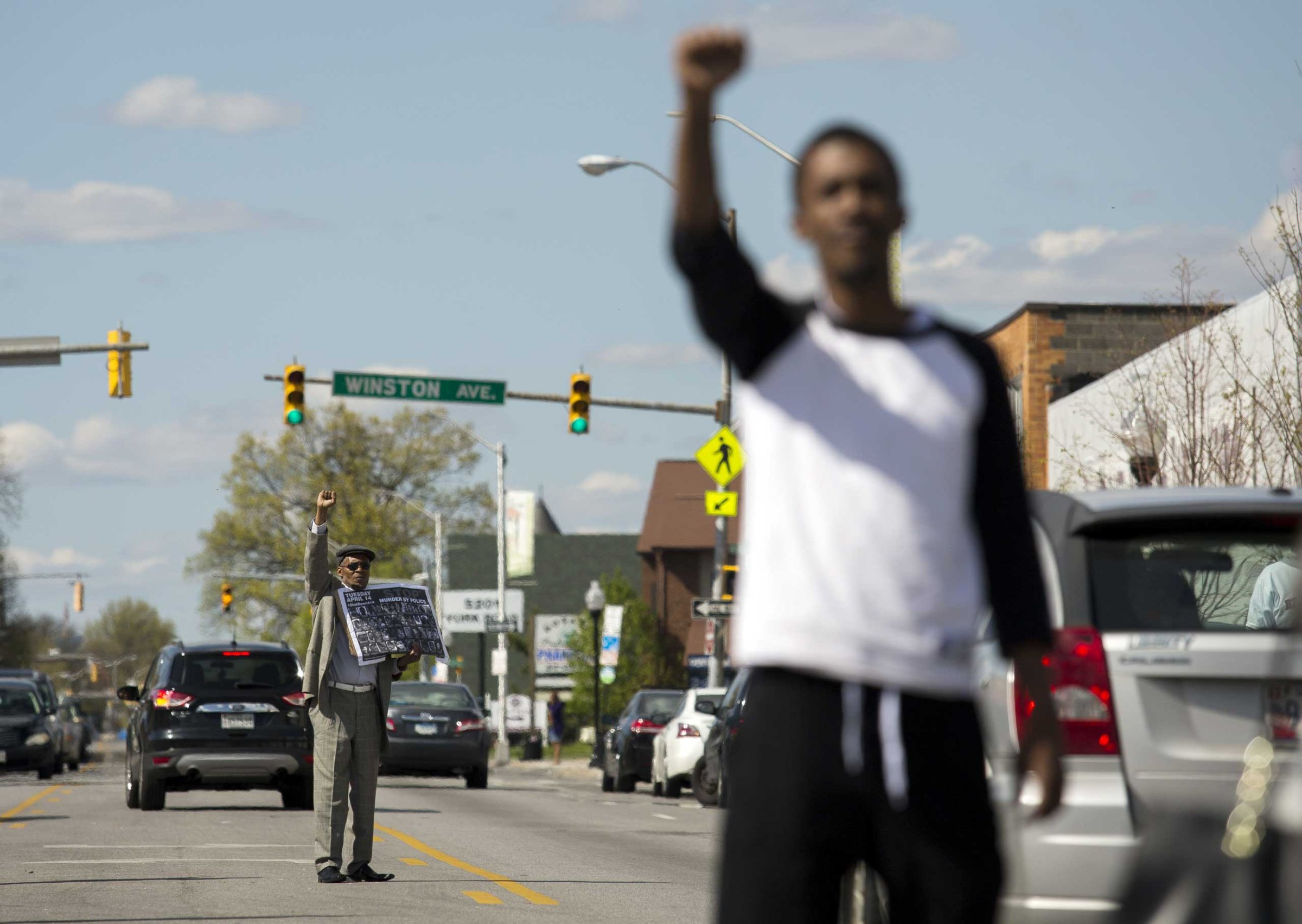
Freddie Gray’s body lies in state on a city fault line.
To the west of Vaughn Greene Funeral Services, where a wake was held Sunday for the 25-year-old Baltimore man who died in police custody, is Loyola University and largely white and affluent surrounding neighborhoods. To the east are Winston-Govans and Richnor Springs and Kenilworth Park—all low-income, predominantly black neighborhoods.
On Sunday, Gray’s body was at a nexus of those two Baltimores. The funeral home is located on York Road, a north-south corridor that almost neatly divides those starkly different areas of the city. Gray, who was black, died in police custody on April 19 after he was arrested a week earlier near Gilmor Homes, a public housing complex. Gray ran from police after he “made eye contact” with officers and was eventually detained. Video taken by bystanders shows police dragging Gray into a police van. An autopsy later showed that Gray died from a severe spinal injury.
The incident has joined those in Ferguson, North Charleston, Cleveland and New York—all instances in which police use of force incidents against black men have been called into question. On Saturday, protests over Gray’s death briefly turned violent when Baltimore police arrested 35 protesters after businesses were vandalized and police vehicles damaged. Officials blame a small group of people from outside the city for the violence. Mayor Stephanie Rawlings-Blake said at least one of those arrested was from outside of Baltimore.
But on Sunday, Baltimore remained largely quiet aside from several dozen demonstrators lining York outside the funeral home where hundreds of family and friends paid their respects. Some stood in the street for hours holding cut-out cardboard signs that read “We Will Remember Freddie” in black marker while urging passing cars to honk in support.
Witness Protests in Baltimore Over the Death of Freddie Gray


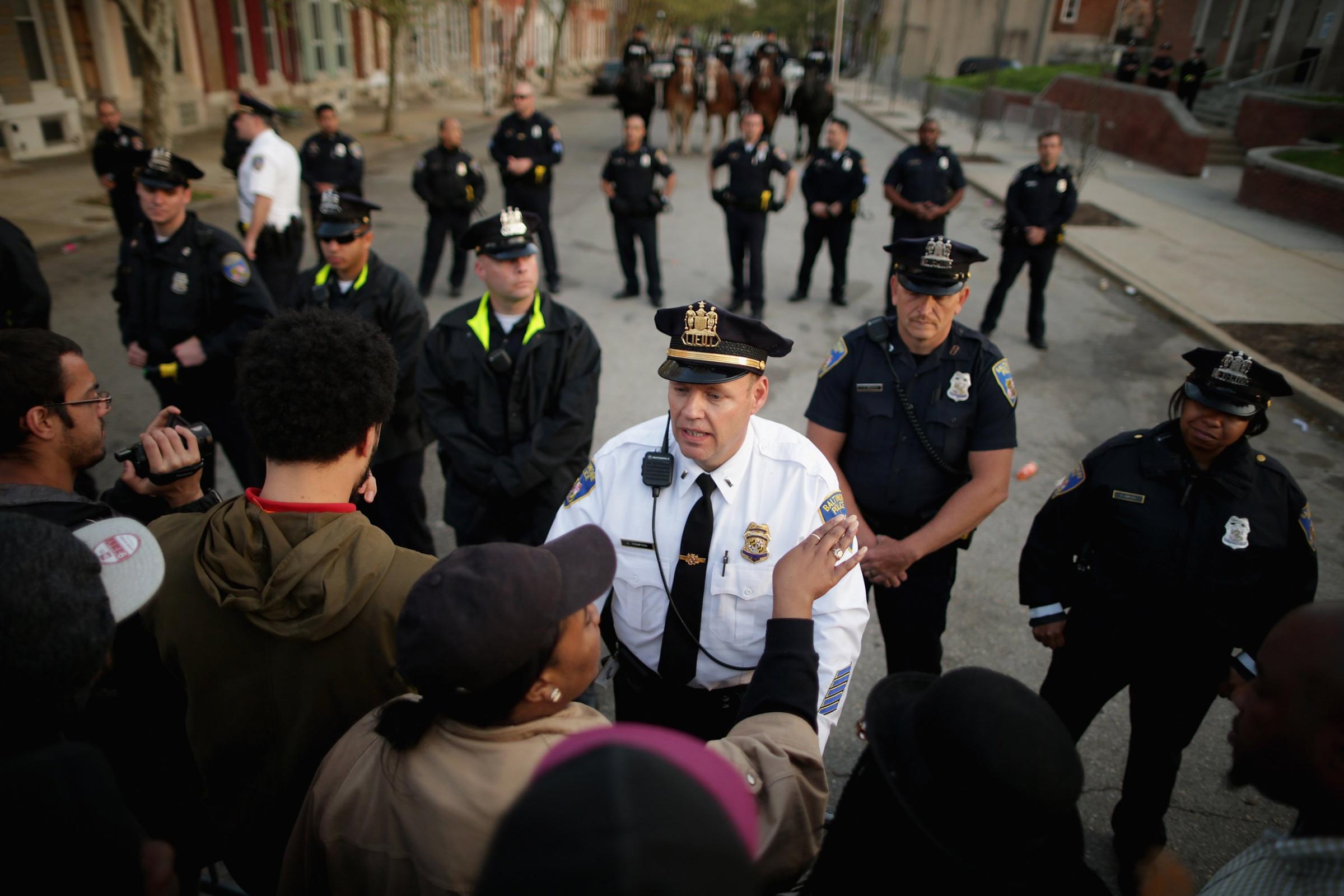

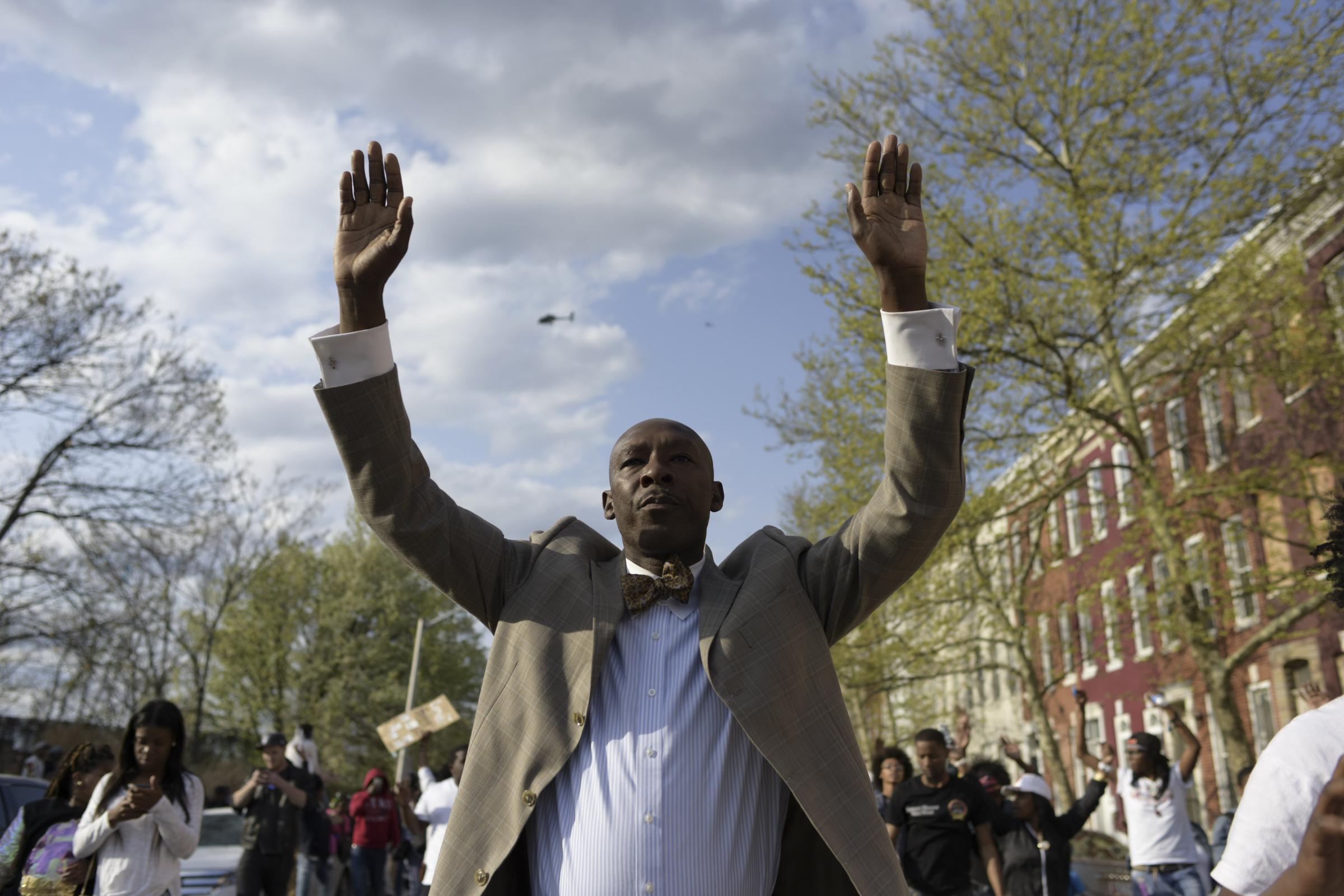

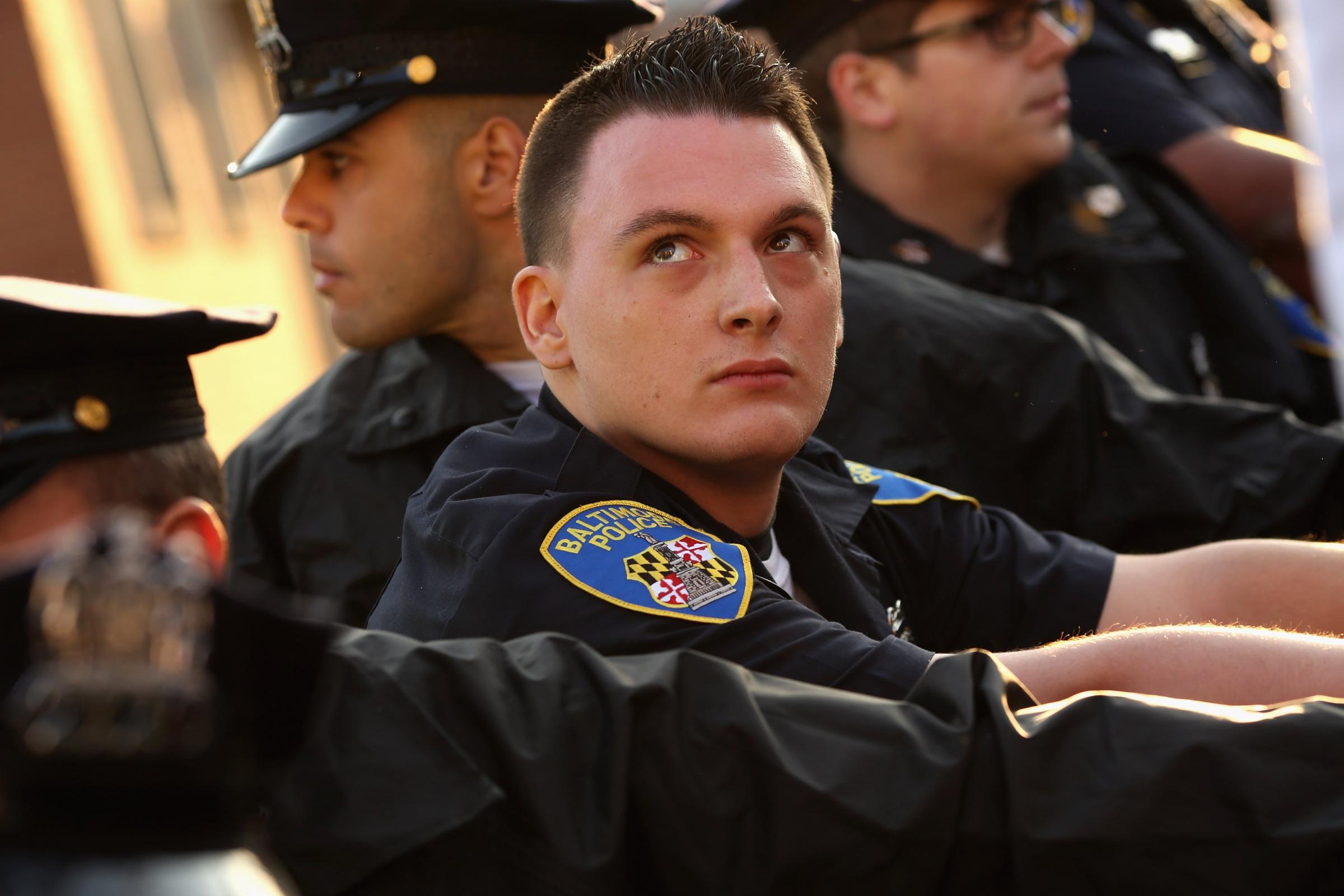
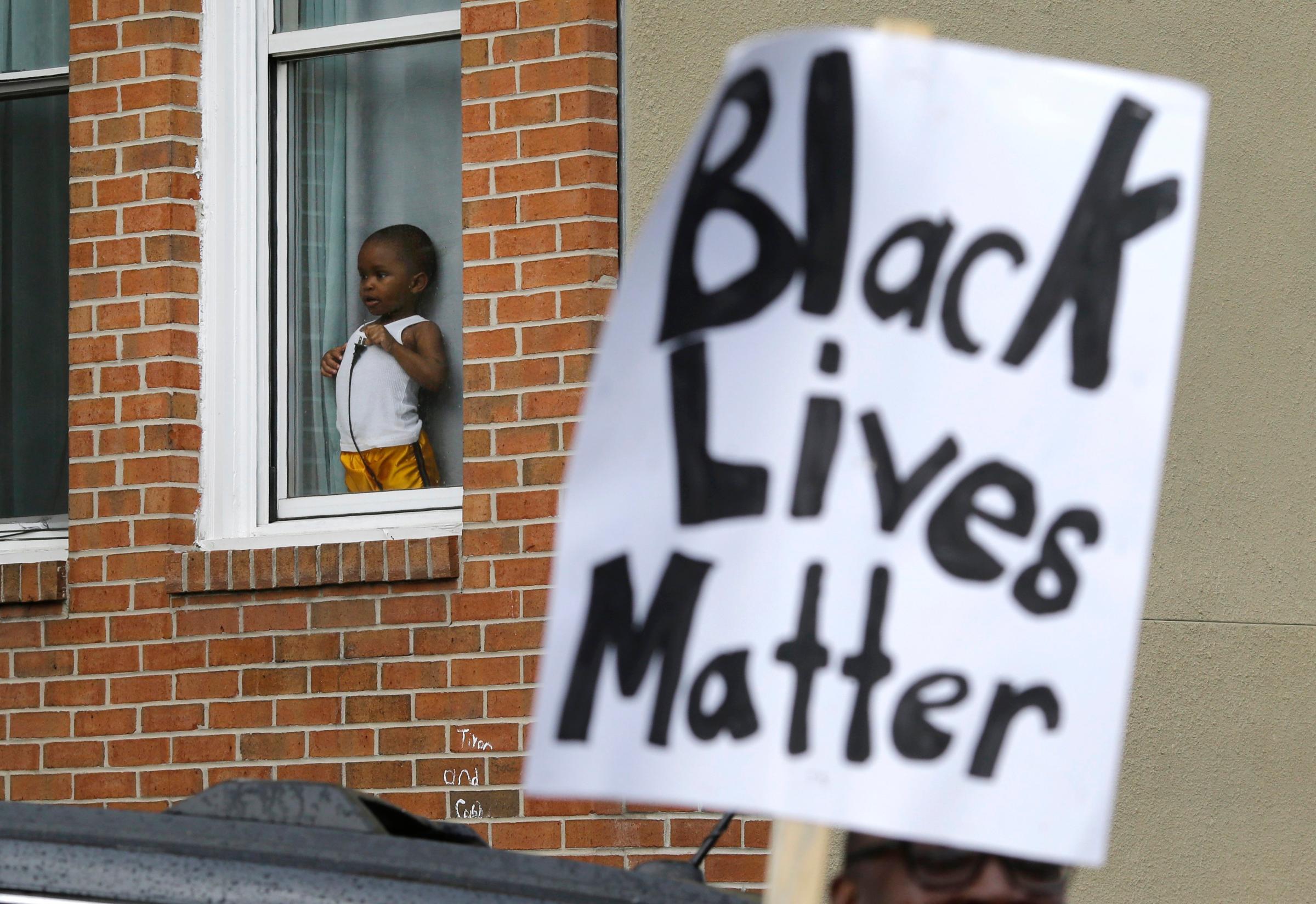
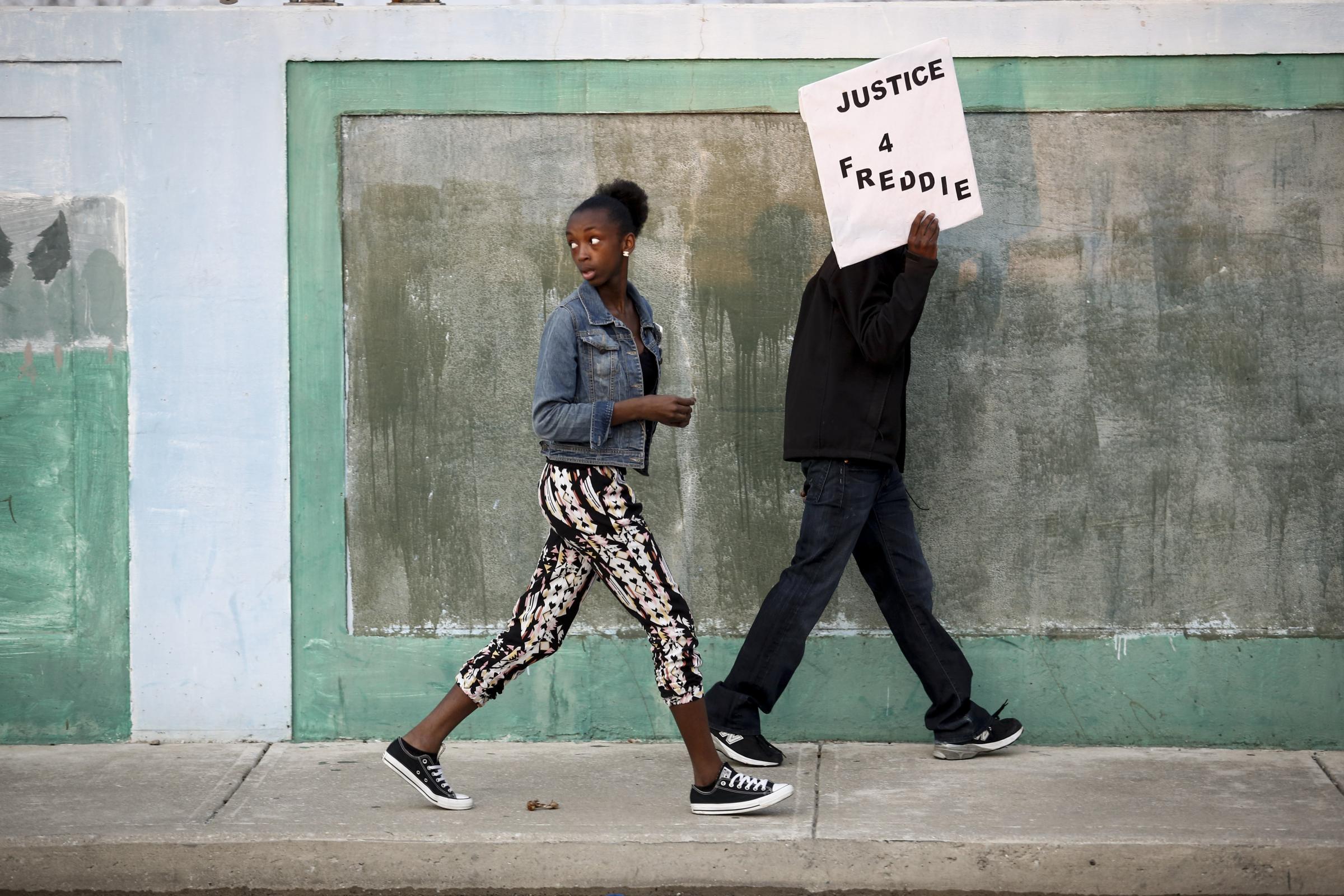

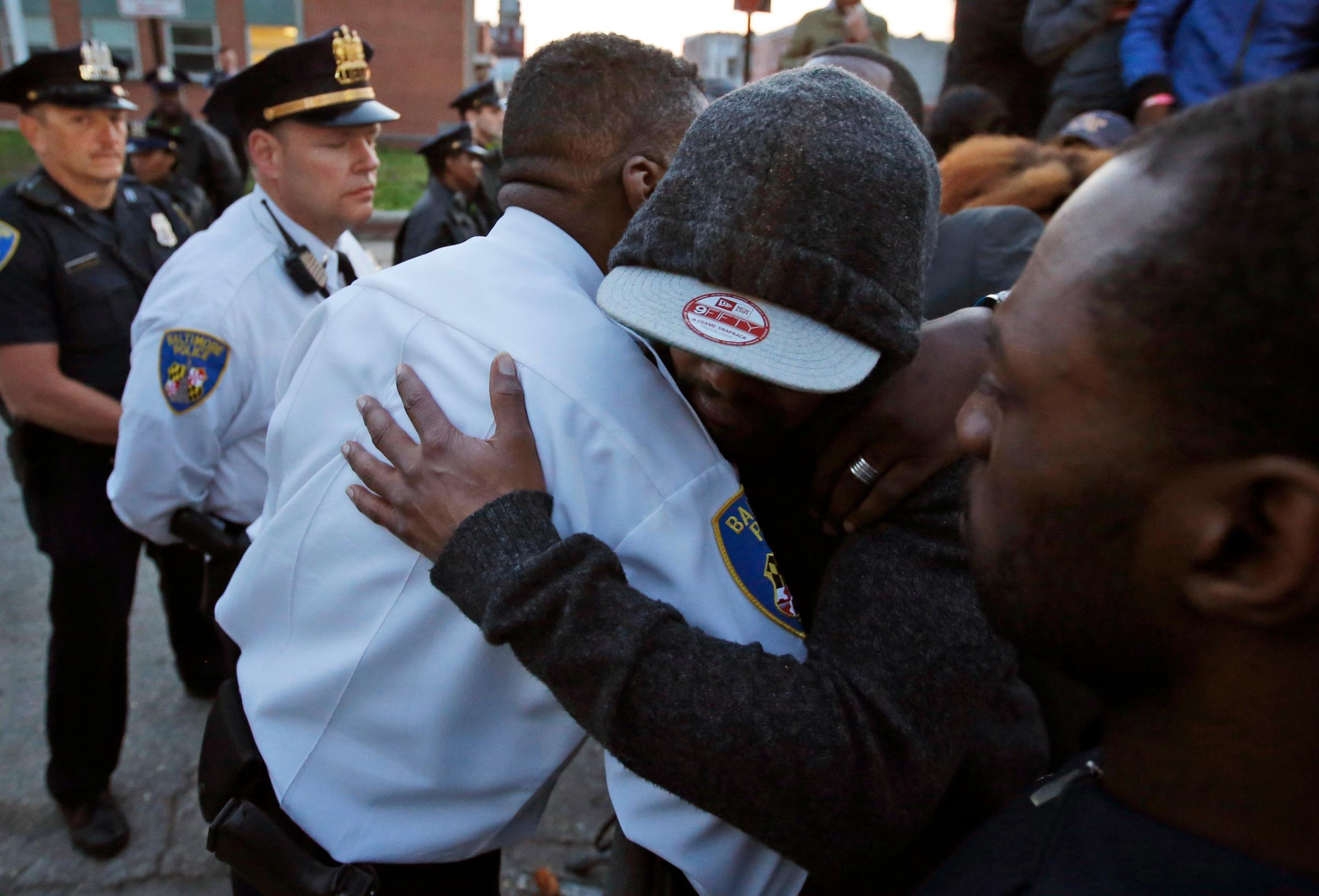
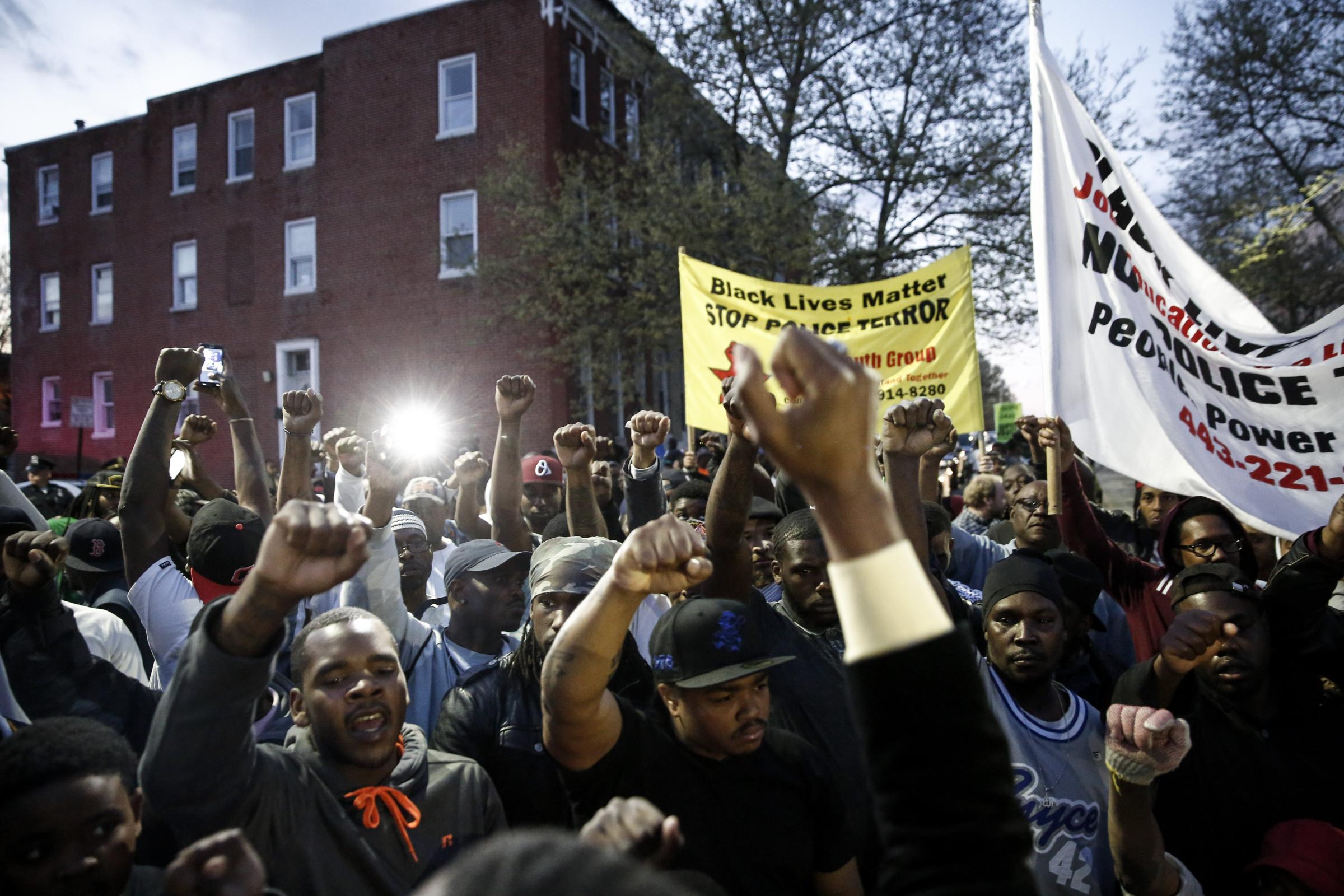
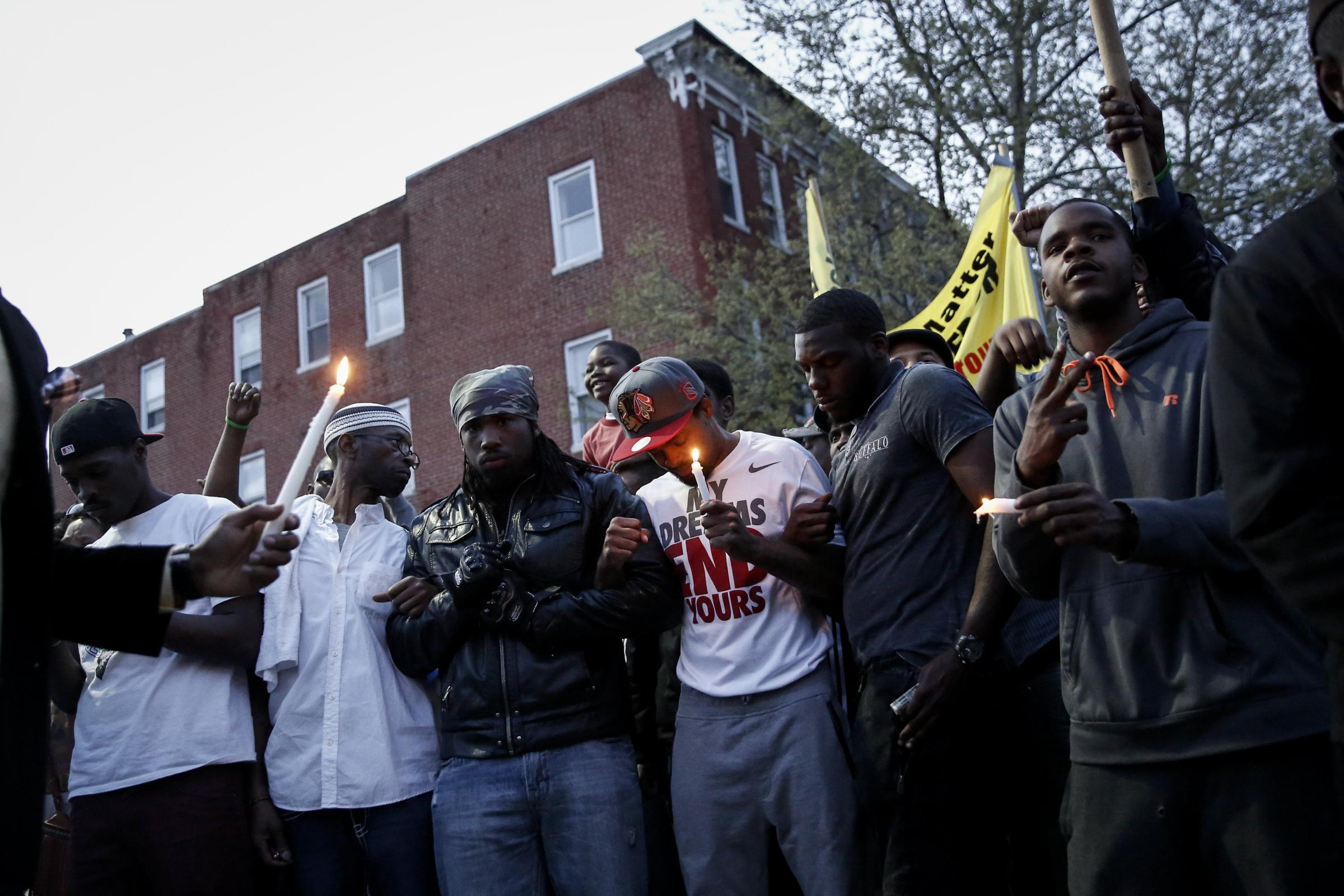
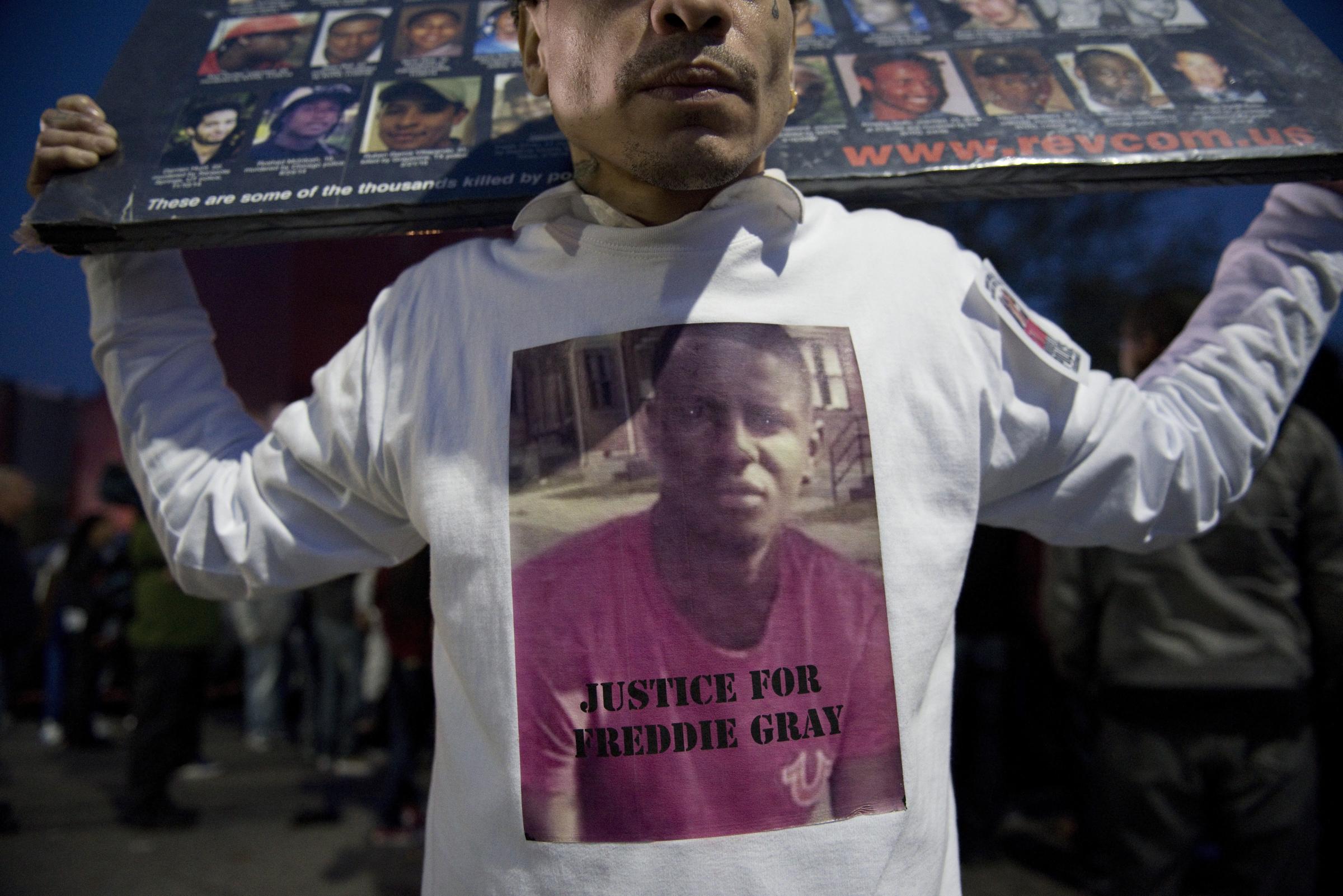
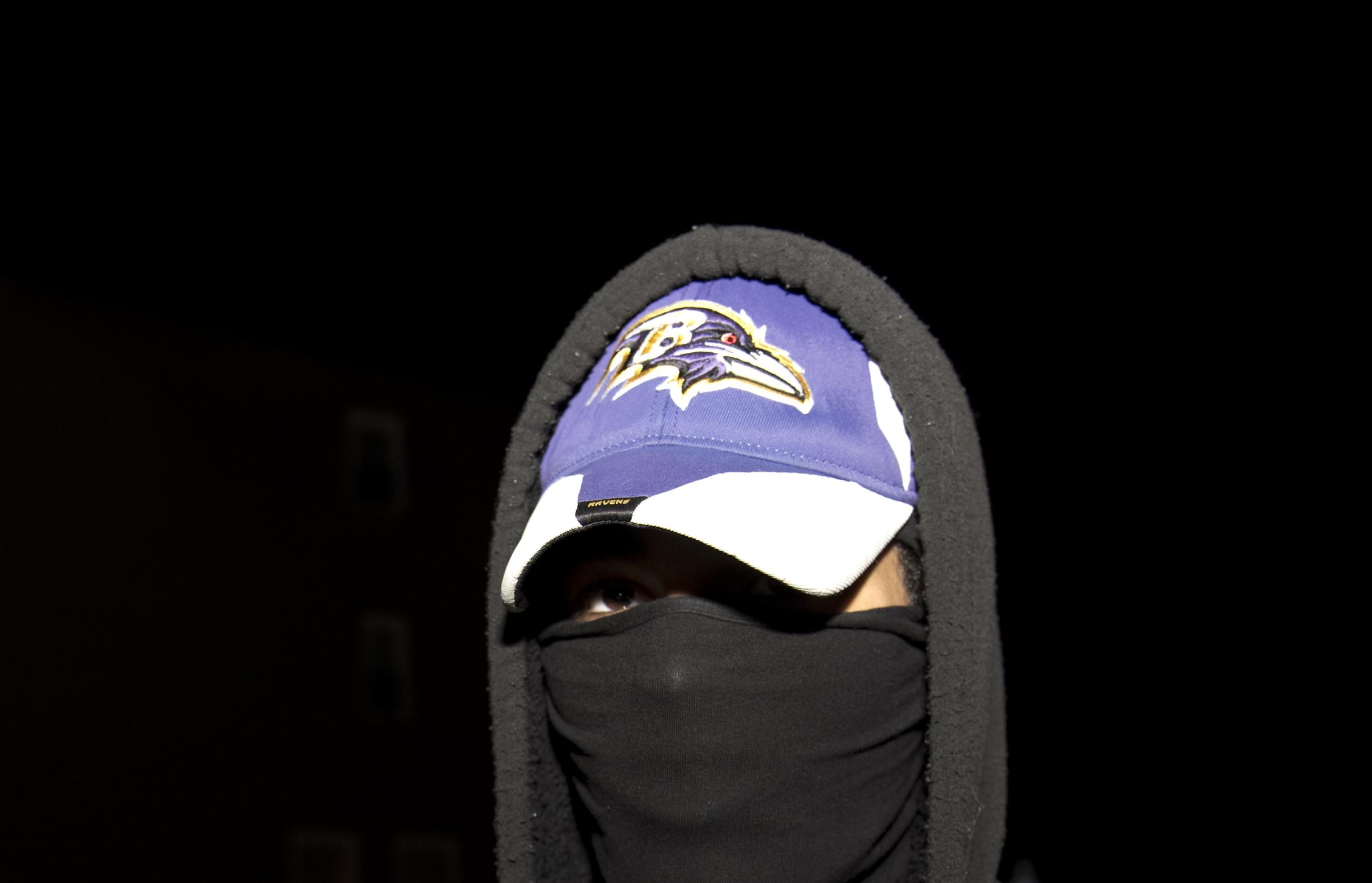
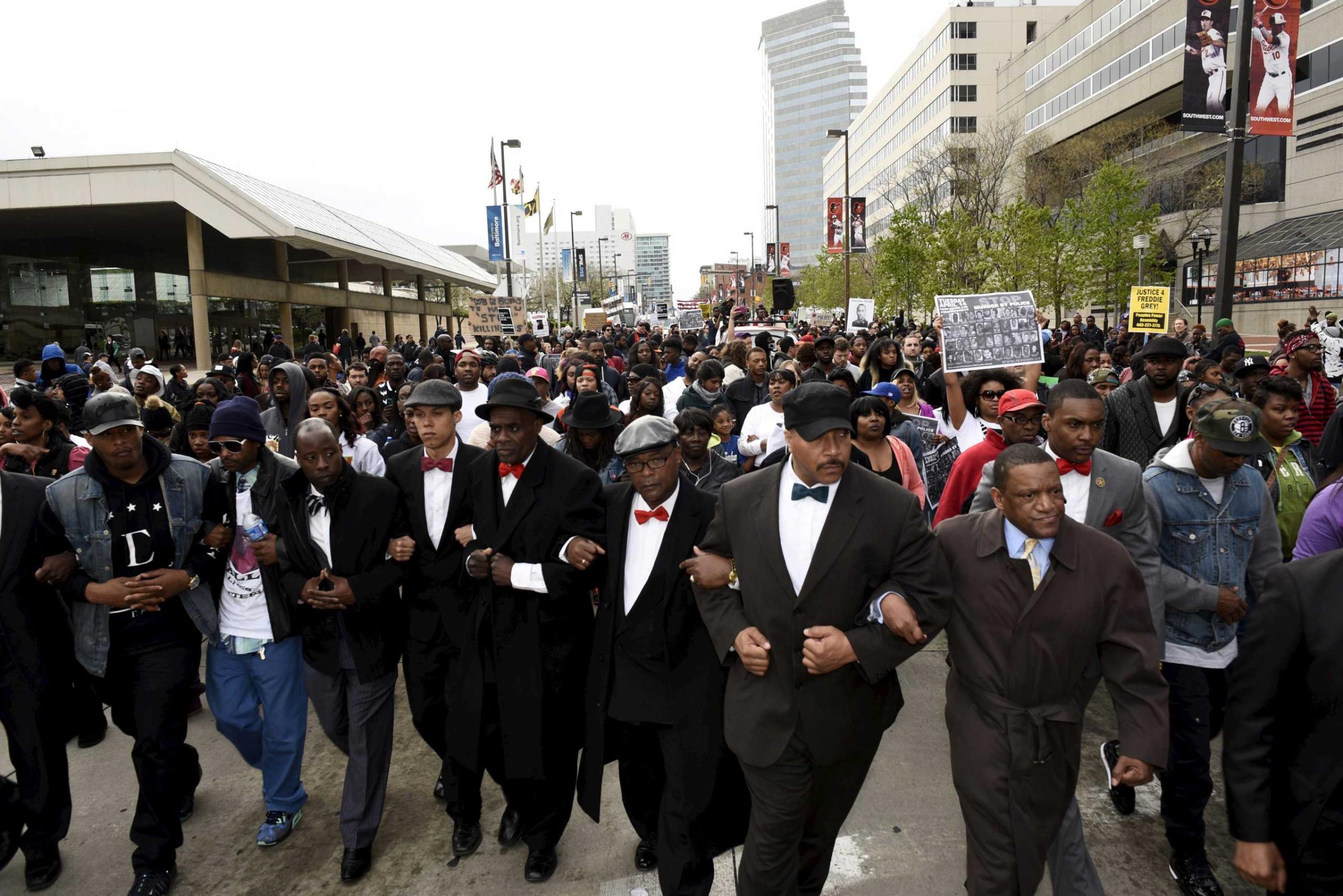

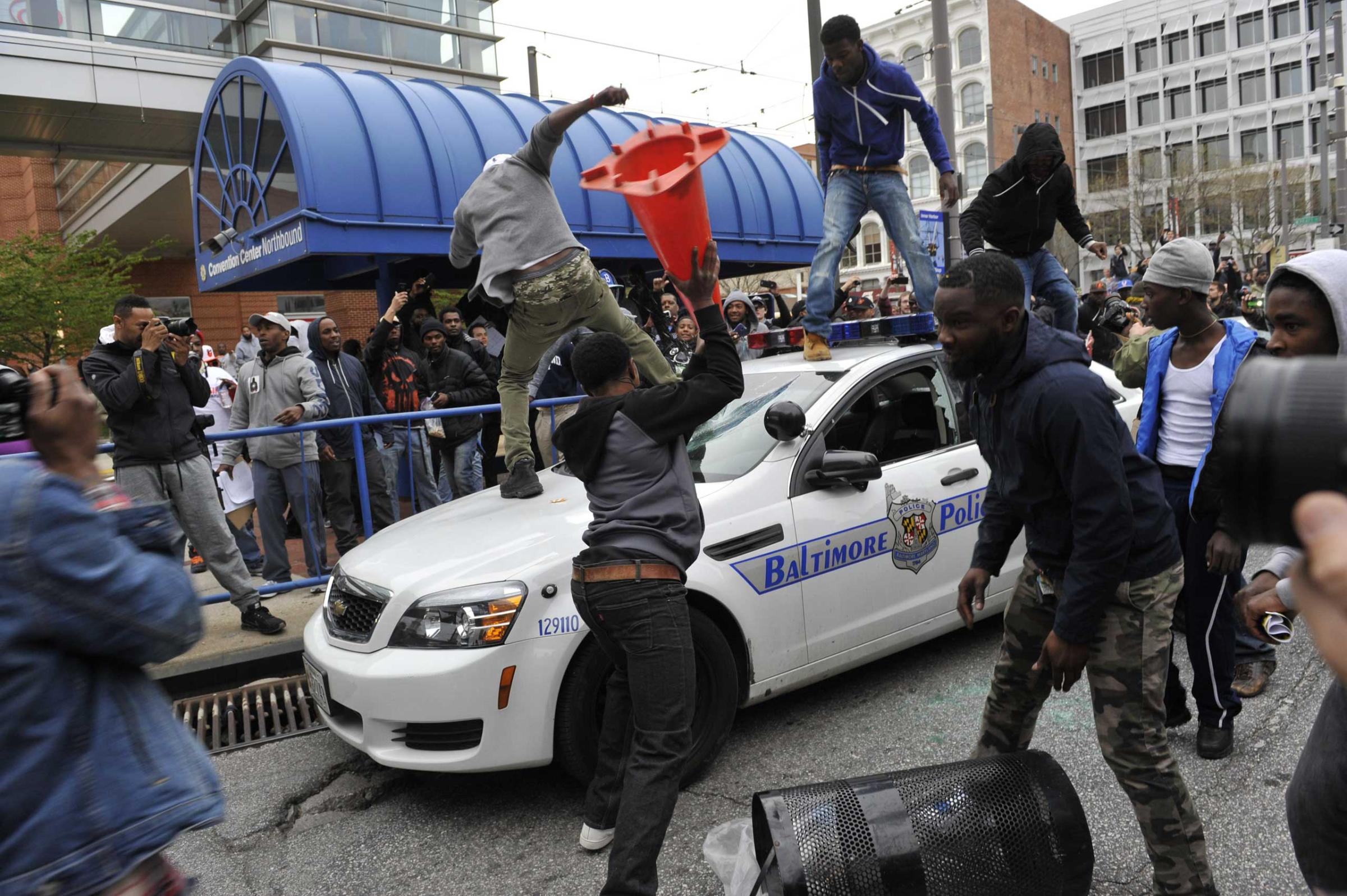


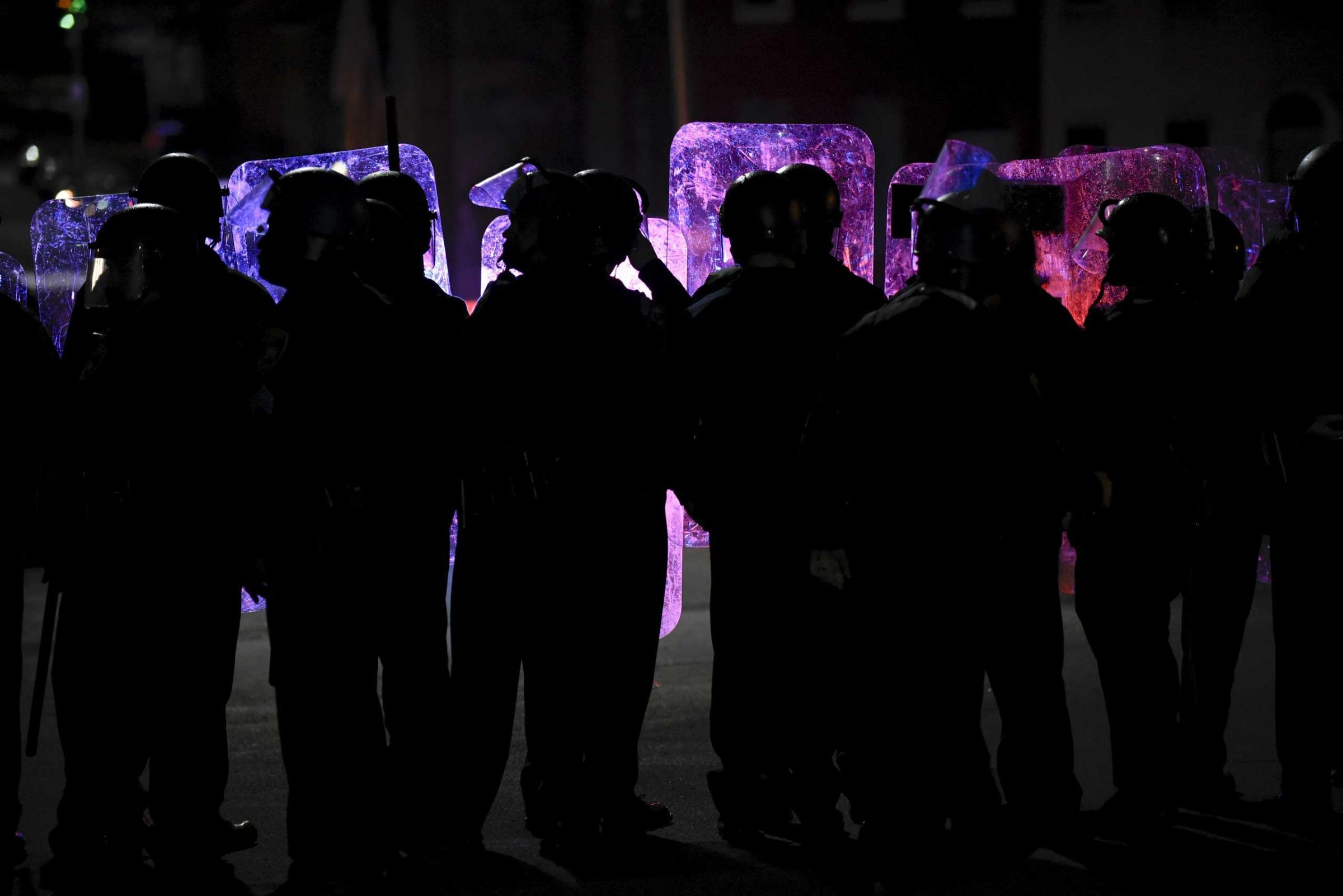
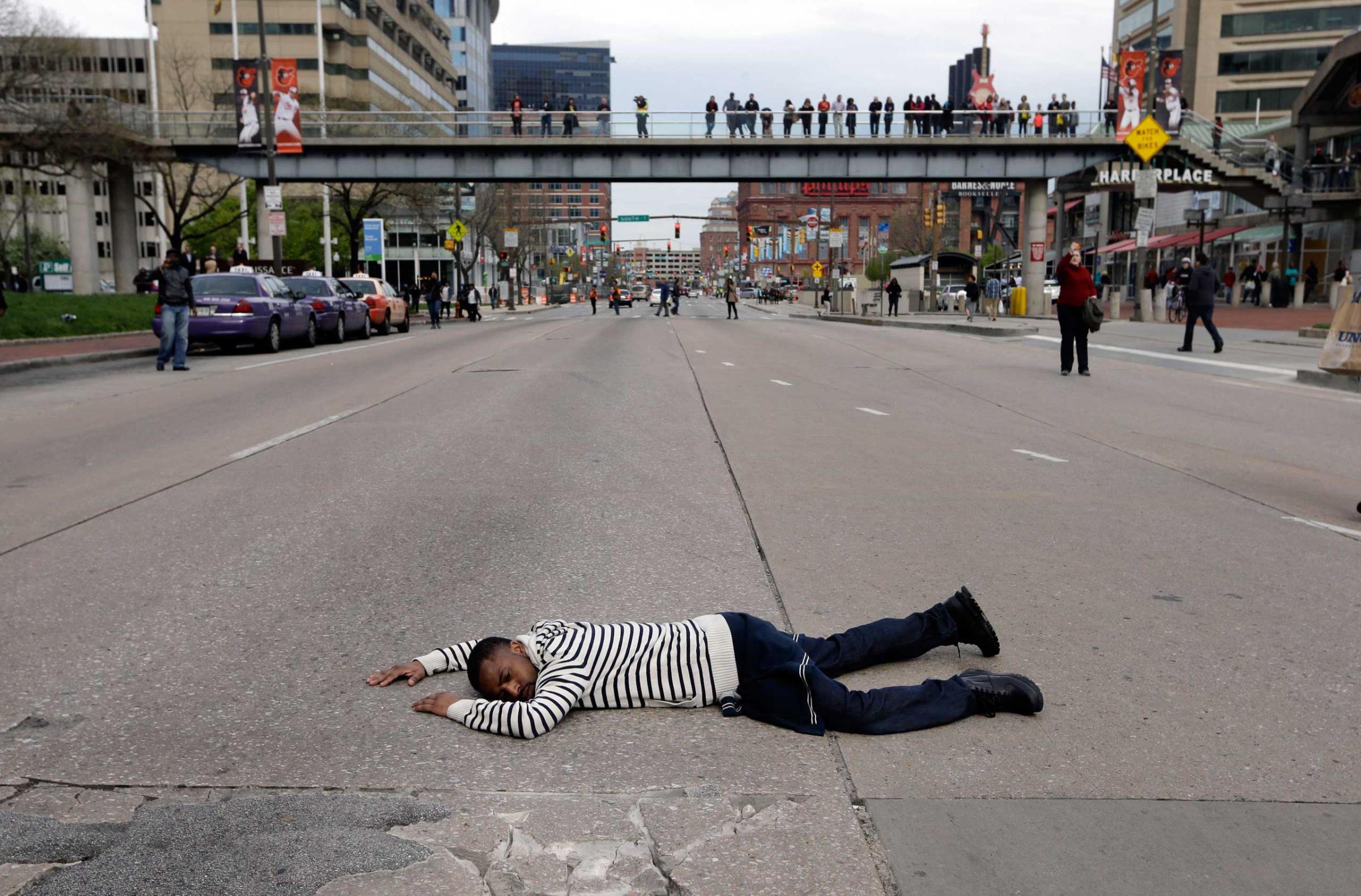
Joseph Capista, a lecturer at Towson University who helped organize Sunday’s demonstration, said he hoped Gray’s death would be a tipping point for the city.
“We live in an antebellum society in terms of racial justice,” Capista said, adding that he believed police behavior differed depending on the neighborhood. Policing in white neighborhoods, he said, is often more respectful on the whole than in poorer black ones.
A number of protesters were concerned that Baltimore—nicknamed “Charm City”—was being treated unfairly in the media after the trouble on Saturday.
“Baltimore was not out of control,” said Karen DeCamp, a director at the Greater Homewood Community Corporation, a nonprofit advocacy organization, who was demonstrating outside the funeral home. “Baltimore was not burning. A very small number of people made some trouble, and it was completely blown out of proportion.”
While there was no violence Sunday, there was still anger. Patrices Kelly, 40, who lives in West Baltimore and was watching demonstrators Sunday, said she wanted both the mayor and Police Commissioner Anthony Batts to step down.
Kelly said she was “angry as hell,” and “frustrated” at city officials’ response. “We just want to do something about it.”
Several miles away, Baltimore’s mayor convened a press conference at the Bethel A.M.E. Baptist Church alongside about a dozen religious and community leaders. Rawlings-Blake said that a “small group of agitators” turned otherwise peaceful demonstrations violent on Saturday, calling their actions “unacceptable.”
“We cannot and will not let a minority of incendiary individuals exploit the honorable intentions of those trying to exercise their rights,” Rawlings-Blake said.
Democratic Rep. Elijah Cummings said he saw “tremendous restraint” on the part of the Baltimore police Saturday.
On Monday, Gray is set to be buried at the New Shiloh Baptist Church in the neighborhood of Mondawmin. The fault line of York Road will remain for now.
Trayvon Martin
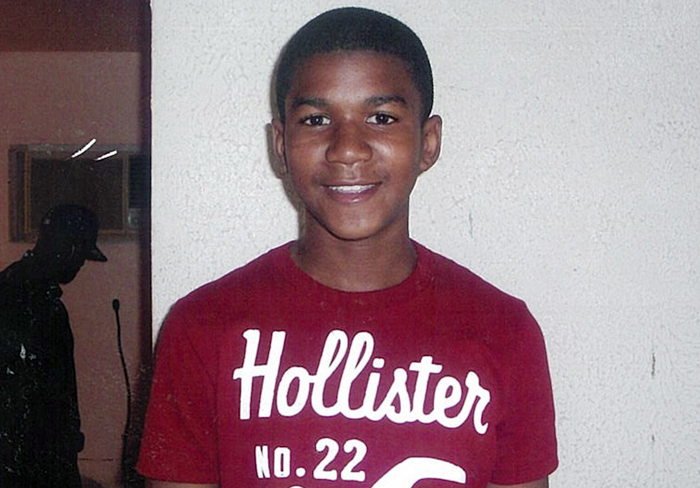
Feb. 26, 2012 Neighborhood watch volunteer George Zimmerman fatally shoots unarmed 17-yearold Trayvon Martin after an altercation in a Sanford, Fla., subdivision. The incident sparked a national conversation about race and prompted President Obama to say that were he to have a son, “he’d look like Trayvon.” Zimmerman, who argued that he acted in self-defense, was acquitted of second-degree murder and manslaughter in July 2013.
Ernest Satterwhite
Feb. 9, 2014 Ernest Satterwhite, 68, is shot and killed in his driveway by a white public-safety officer in North Augusta, S.C., following a slow-speed car chase. Justin Craven fired multiple rounds through the driver-side door of the vehicle. The officer alleges that Satterwhite reached for his weapon; Satterwhite’s family disputes the allegation. Craven was charged with a felony for discharging his gun into an occupied vehicle on April 7, the same day Michael Slager was charged with murdering Walter Scott. He faces up to 10 years in prison.
Dontre Hamilton

April 30, 2014 Milwaukee police officer Christopher Manney fatally shoots Dontre Hamilton, an unarmed 31-year-old African American with a history of mental illness, in a downtown park. Manney alleged that Hamilton, who appeared to be homeless, attempted to grab his baton during a pat down. Manney says he shot Hamilton 14 times in self-defense. Manney was fired in October but was not charged in the shooting.
Eric Garner
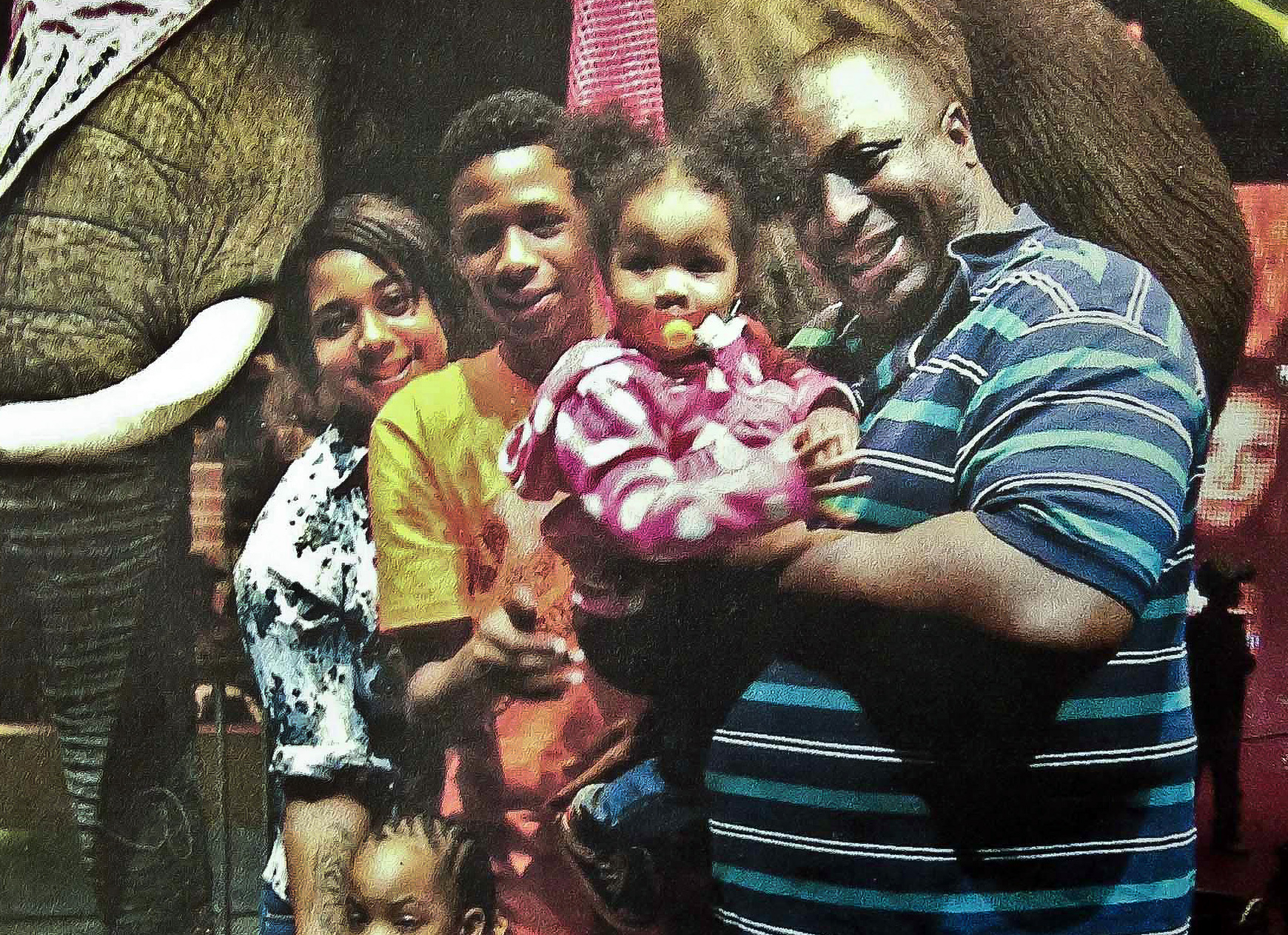
July 17, 2014 Eric Garner, 43, dies after being wrestled to the ground as New York City police attempted to arrest him for selling illegal cigarettes. In a cell-phone video recorded by a bystander, Garner can be heard repeatedly saying, “I can’t breathe.” The phrase was soon adopted as a rallying cry by protesters. On Dec. 3, a grand jury decided not to indict NYPD officer Daniel Pantaleo in Garner’s death.
John Crawford III

Aug. 5, 2014 John Crawford III, 22, is shot inside a Walmart in Beavercreek, Ohio, after picking up an air rifle from the shelf. While police say they repeatedly asked Crawford, who was black, to drop the gun, surveillance video shows that police shot the man soon after approaching him.
Michael Brown

Aug. 9, 2014 Darren Wilson, a white Ferguson, Mo., police officer, fatally shoots unarmed 18-yearold Michael Brown, setting off months of unrest in the St. Louis area. Protests erupted nationwide in November, when Wilson was not indicted in Brown’s death. But the shooting prompted a Justice Department investigation of the Ferguson Police Department. In March, after the scathing report found instances of overt racism among officers and a pattern of arrests targeting black residents, Ferguson’s police chief and city manager resigned.
Levar Jones
Sept. 4, 2014 Levar Jones, 35, is shot multiple times by 31-year-old Sean Groubert, a white South Carolina state trooper, seconds after being stopped for a seat-belt violation, all of which was caught on the officer’s dash cam. Jones, who was black and unarmed, survived and can be heard on a video asking, “Why did you shoot me?” Groubert was later fired and charged with assault and battery, which carries a sentence of 20 years in prison. A verdict is expected later this year.
Tamir Rice

Nov. 22, 2014 Tamir Rice, 12, is fatally shot and killed in a Cleveland park after police responded to a 911 call reporting a person with a gun. The caller warned that the gun may have been fake, but the officers say they didn’t know that. Officer Timothy Loehmann shot Rice within seconds of arriving on the scene. Rice’s gun turned out to have been a toy. A group of political and religious leaders have called for criminal charges to be brought against the officers involved, and a grand jury plans to hear evidence in the case.
Rumain Brisbon
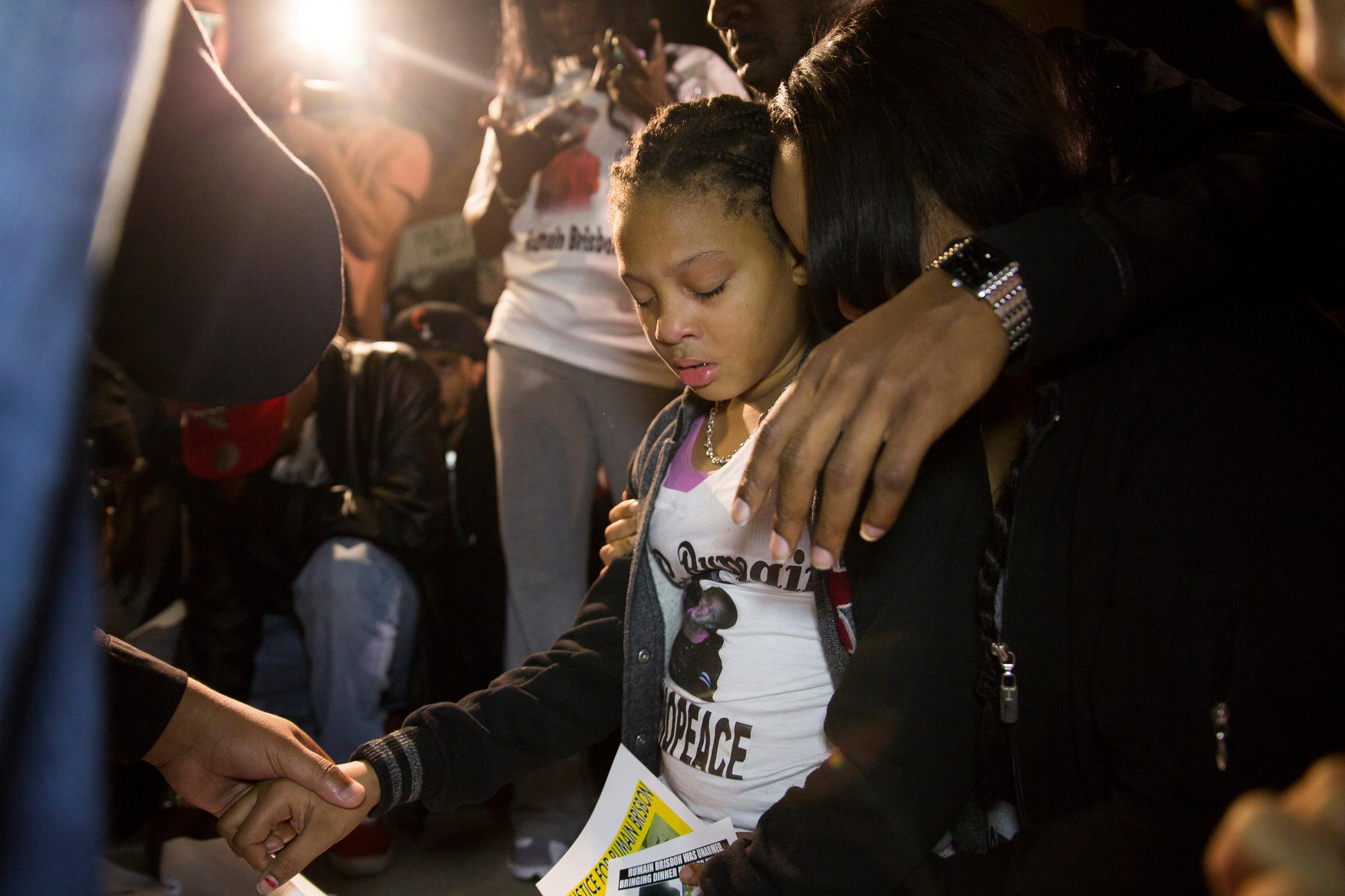
Dec. 2, 2014 Rumain Brisbon, 34, is shot and killed by a Phoenix police officer following a drug-related traffic stop in which Brisbon, who was black, fled, refused arrest and appeared to be reaching for a weapon. Brisbon was shot by Mark Rine, a 30-year-old white officer. The incident set off several demonstrations in downtown Phoenix. On April 1, a Maricopa County attorney announced that criminal charges would not be brought against Rine.
Charly “Africa” Leundeu Keunang
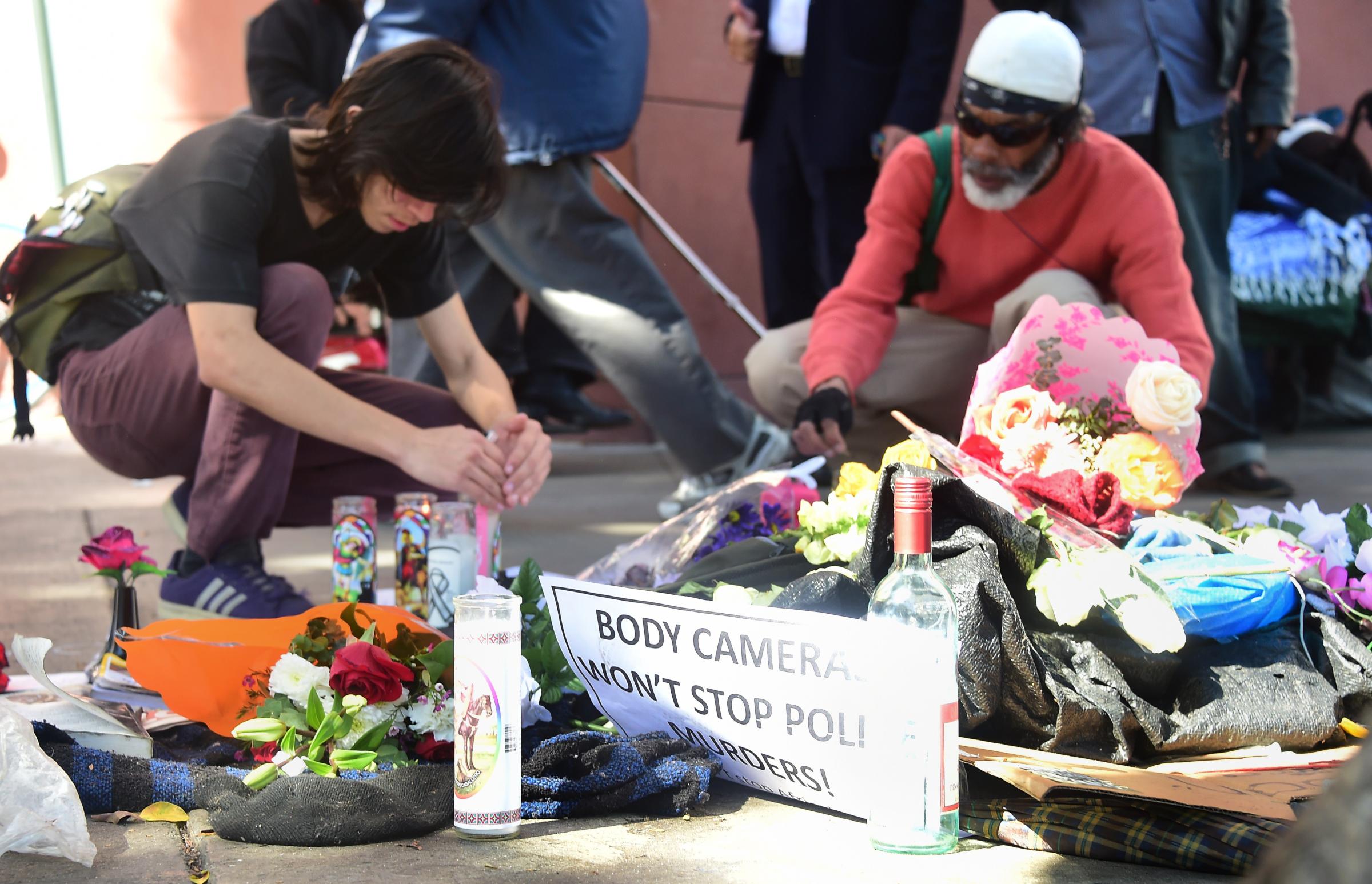
March 1, 2015 Los Angeles police officers shoot and kill a black homeless man named Charly “Africa” Leundeu Keunang, following a confrontation in the city’s Skid Row, an area with a heavy concentration of homeless people. Officers said the man attempted to take one of their guns.
Naeschylus Vinzant
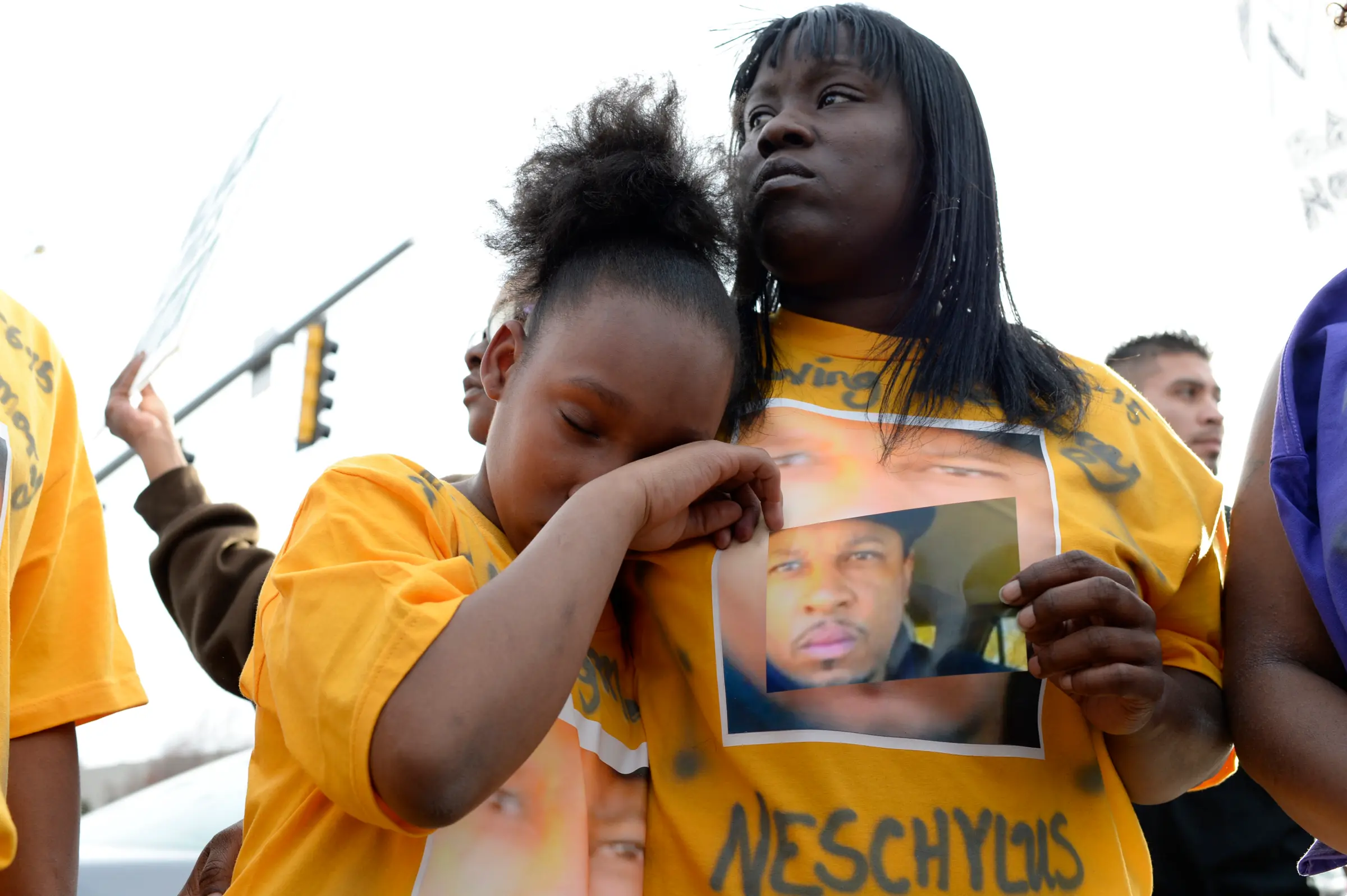
March 6, 2015 Naeschylus Vinzant, a 37-yearold unarmed black man, is shot in the chest and killed by Paul Jerothe, a police officer in Aurora, Colo. At the time of the shooting, Vinzant was violating his parole and had removed his ankle bracelet. He also had a violent criminal history but was unarmed as officers tried to arrest him. Jerothe, a SWAT team medic officer, has been placed on administrative leave pending an investigation.
Tony Robinson
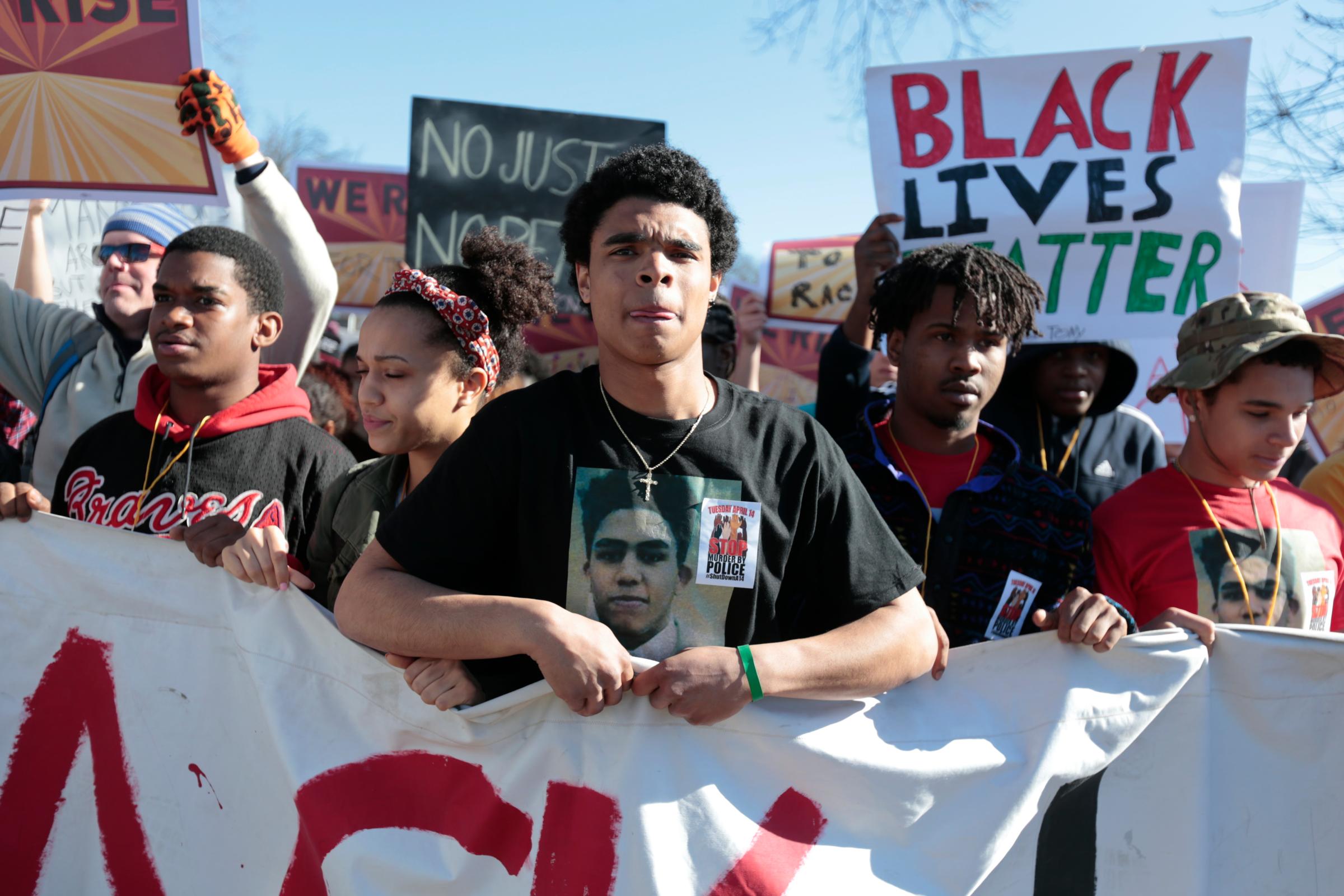
March 6, 2015 Tony Robinson, a 19-year-old biracial man, is shot by a white Madison, Wis., police officer after Robinson was allegedly jumping in and out of traffic. Matt Kenny, a 45-year-old officer who was exonerated in a 2007 shooting of an African-American man, got into an altercation with Robinson when he entered an apartment in which Robinson was reportedly acting aggressively. Kenny, who says he was attacked by Robinson, was placed on administrative leave with pay pending the results of an investigation.
Anthony Hill

March 9, 2015 Anthony Hill, a black 27-yearold Air Force veteran, is shot and killed in Chamblee, Ga., by Robert Olsen, a white DeKalb County Police Department officer. Hill was naked and unarmed at the time of the incident and was apparently knocking on multiple apartment doors inside a housing complex. Olsen has been placed on leave. An investigation by the Georgia Bureau of Investigation is currently under way.
Walter Scott
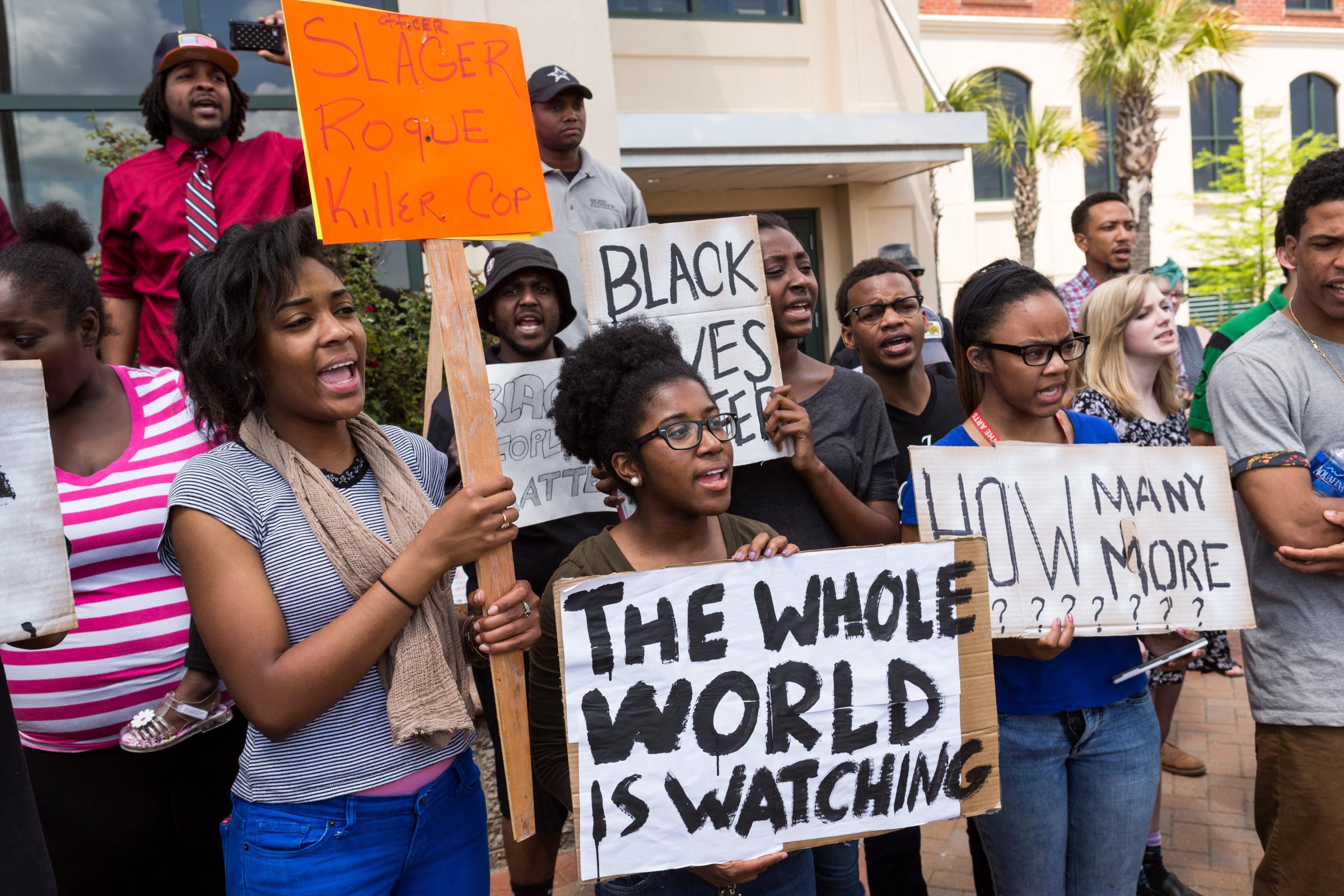
April 4, 2015 Walter Scott, a 50-year-old black man, is shot and killed as he’s apparently fleeing North Charleston officer Michael Slager, 33. Slager, who is white, alleges that Scott reached for his Taser. A video recorded by a bystander appears to show Scott running away from the officer as he’s shot in the back eight times.
More Must-Reads from TIME
- Donald Trump Is TIME's 2024 Person of the Year
- Why We Chose Trump as Person of the Year
- Is Intermittent Fasting Good or Bad for You?
- The 100 Must-Read Books of 2024
- The 20 Best Christmas TV Episodes
- Column: If Optimism Feels Ridiculous Now, Try Hope
- The Future of Climate Action Is Trade Policy
- Merle Bombardieri Is Helping People Make the Baby Decision
Contact us at letters@time.com